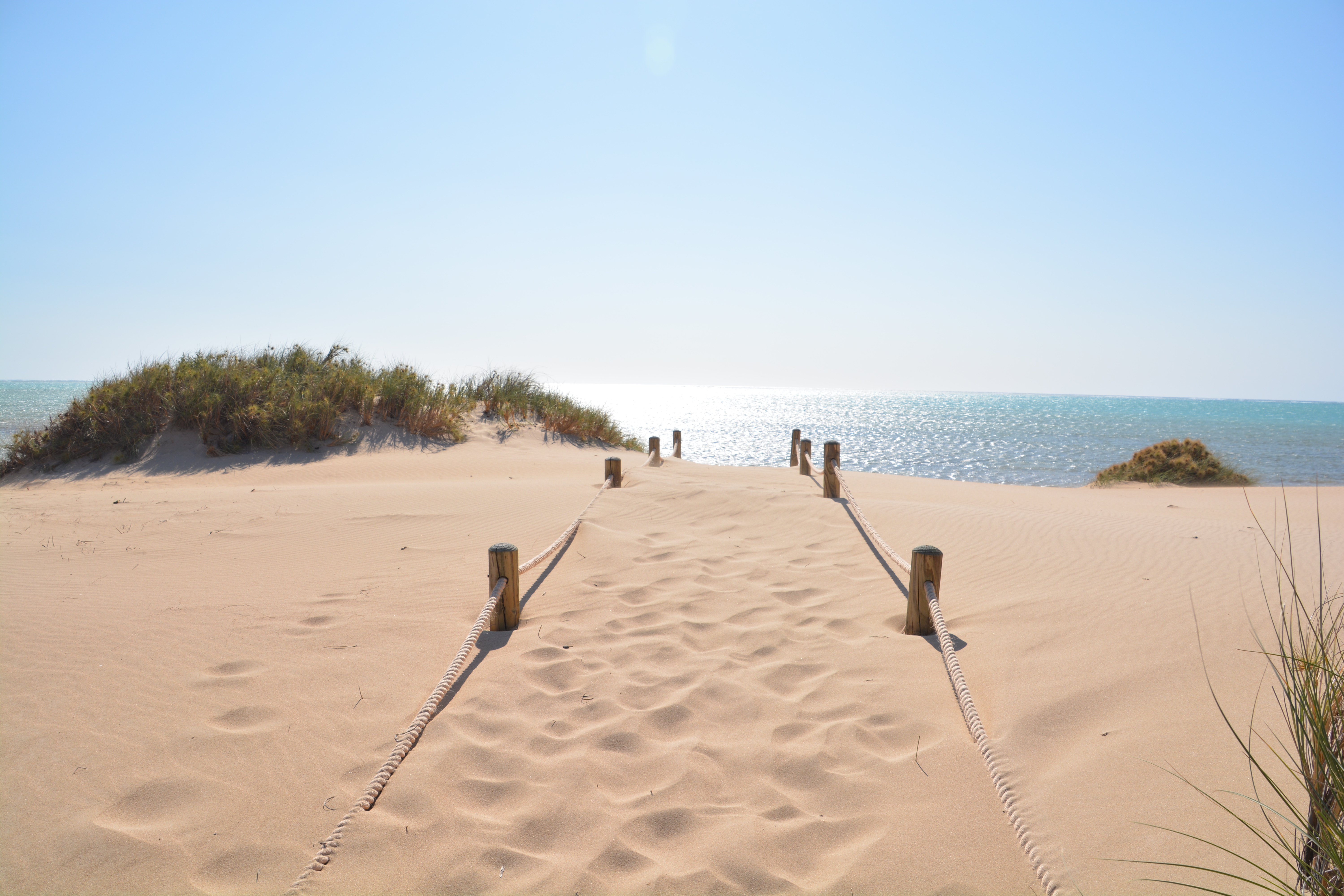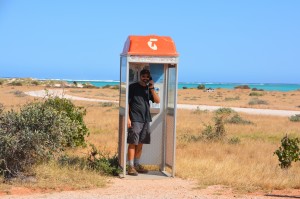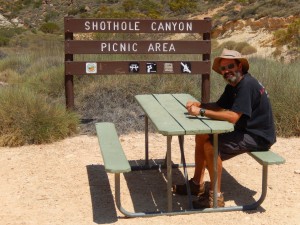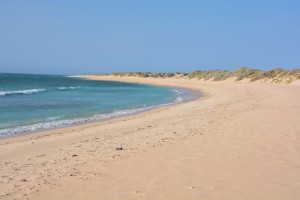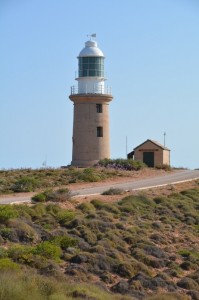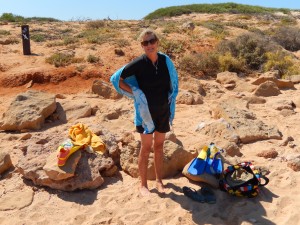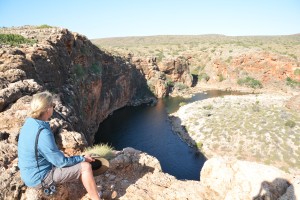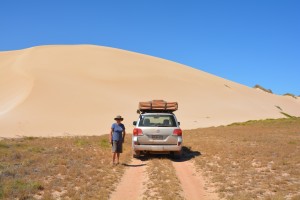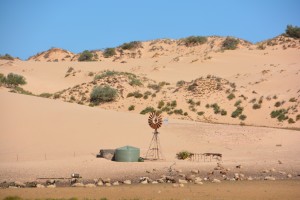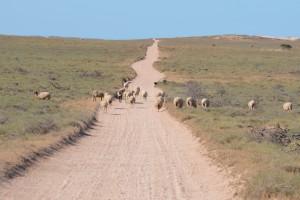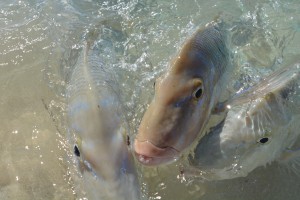Ningaloo
The colourful fish were swimming below us, oblivious to our movement above them or our loud breathing through our snorkels. We love our snorkelling and have done it in many interesting places but we’ve never snorkelled like this – letting the strong current pull you along the shoreline as you pass over healthy coral and a wide array of beautiful fish. This is the Ningaloo Reef, a huge barrier reef just off the large peninsula featuring the Cape Range in northwest Western Australia, and we were riding the current as the wonders of the reef passed below us.
Our first stop on the peninsula, which protrudes out into the ocean like a giant finger pointing northward, was Exmouth, a cosy little tourist town which was originally set up to support the air force base nearby. Today Exmouth is the gateway to the famous Ningaloo Reef which is very user friendly in that it runs close to the shoreline, giving snorkelers, glass bottom boats and fishermen easy access to its treasures. Cape Range National Park protects this environment on the land and Ningaloo Reef Marine Park protects it in the sea.
But this land is also well known for its wind and this time of year the wind hits hard and never gives up. The landscape is fairly flat and featureless, most of what grows in this sandy environment is low lying bushes and spinifex. If it wasn’t for the wonders of the reef this place might have been forgotten about some time ago. If you like barren windswept beauty, book your tickets now.
We camped the first night at a homestead near the northern tip of the peninsula after seeing whales frolic offshore from the great viewpoint of the old lighthouse. The wind howled and the temperature dropped, making the camping scene somewhat grim. But the next morning the sun came up and we were soon in a queue of cars at the park gate vying for a camping spot inside the national park and a chance to see this underwater world upfront. And not much more than an hour later we were in the water, snorkels on, marvelling at the life below us as we drifted up the coast.
Drift snorkelling is a strangely inverted concept to snow skiing. In skiing you catch the lift up the hill and ski down, then repeat. In snorkelling you walk up the beach, drift down the beach, then repeat. On our second drift I spotted a metre and half long reef shark darting below me. By the time I caught Julie’s attention he was gone and so were we. With drift snorkelling you can’t linger in one place too long.
We went in the water in four different places but the wind was up and the water was a bit cold so by early afternoon we headed south to Yardie Creek and Yardie Gorge. This gorge is the only inland attraction of the national park and provided spectacular views of the water carving its way through the soft red sandstone as we walked along the gorge’s rim. We then let the air out of our tyres, crossed Yardie Creek and headed for our campsite amongst the sand dunes.
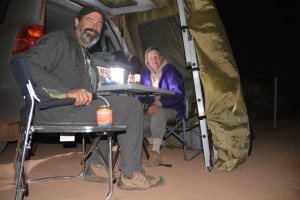
Desperately seeking shelter - hiding from the horrible cold wind in the sand dunes off Ningaloo Reef
That night the wind picked up and our roof top tent was perched higher than any windbreak we could find. The wind hit us hard and rocked the car and tent all night long. It was a long noisy night in our cosy tent and by morning all our footprints and tyre prints in the soft sand were completely gone, as if we had no history at all.
With no reason to linger that morning, we followed the narrow sandy track south along the coast, pulling in to catch glimpses of the various beaches along this beautiful marine park coastline. The drive was absolutely spectacular – in a barren windswept sort of way – and we passed by massive sand dunes, endless low growing grasses, the occasional emus, kangaroos, feral goats and sheep.
After a breathtaking drive of over five hours we arrived in Coral Bay, a small community that attracts fishermen and holiday makers because of its long protected sandy beaches and top notch snorkelling. We were in the water straightaway, drift snorkelling again until the water became too cold, then enjoyed the daily fish feeding on the shoreline and a chance to use the caravan park’s facilities. Coral Bay is quite remote but it has a paved road all the way to it which means caravaners and families can come in their hordes. All good.
Exploring the Ningaloo Reef area was a great way to spend a few days and we really enjoyed being back in the water again. But this coast line is excessively windy this time of year and it limits what you can do and where you can go. We’ve already started thinking long term about coming back to this wonderful coastline in Western Australia and hopefully we can hit this area at a different time of year and linger a bit longer. It’s a winner!
